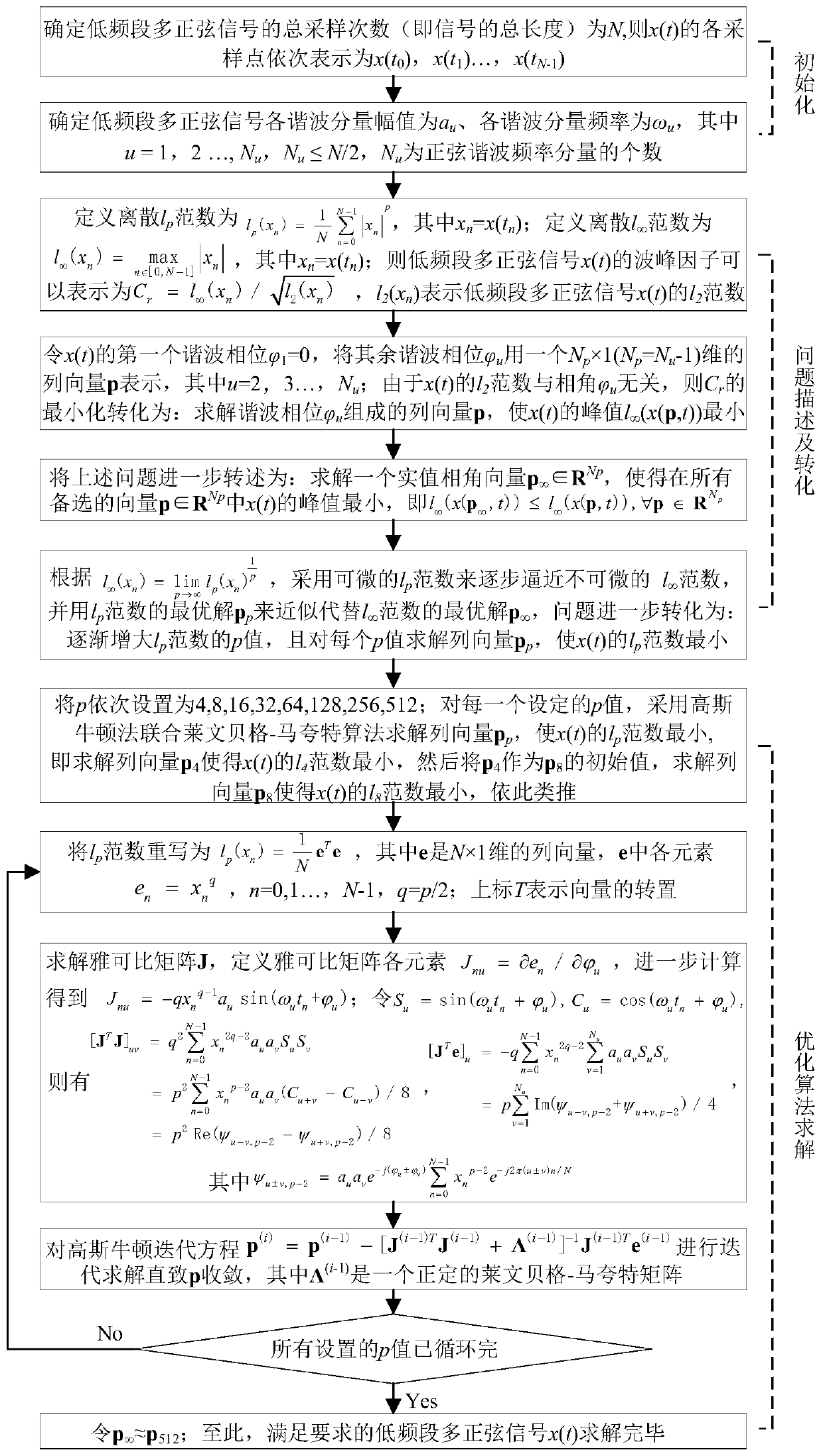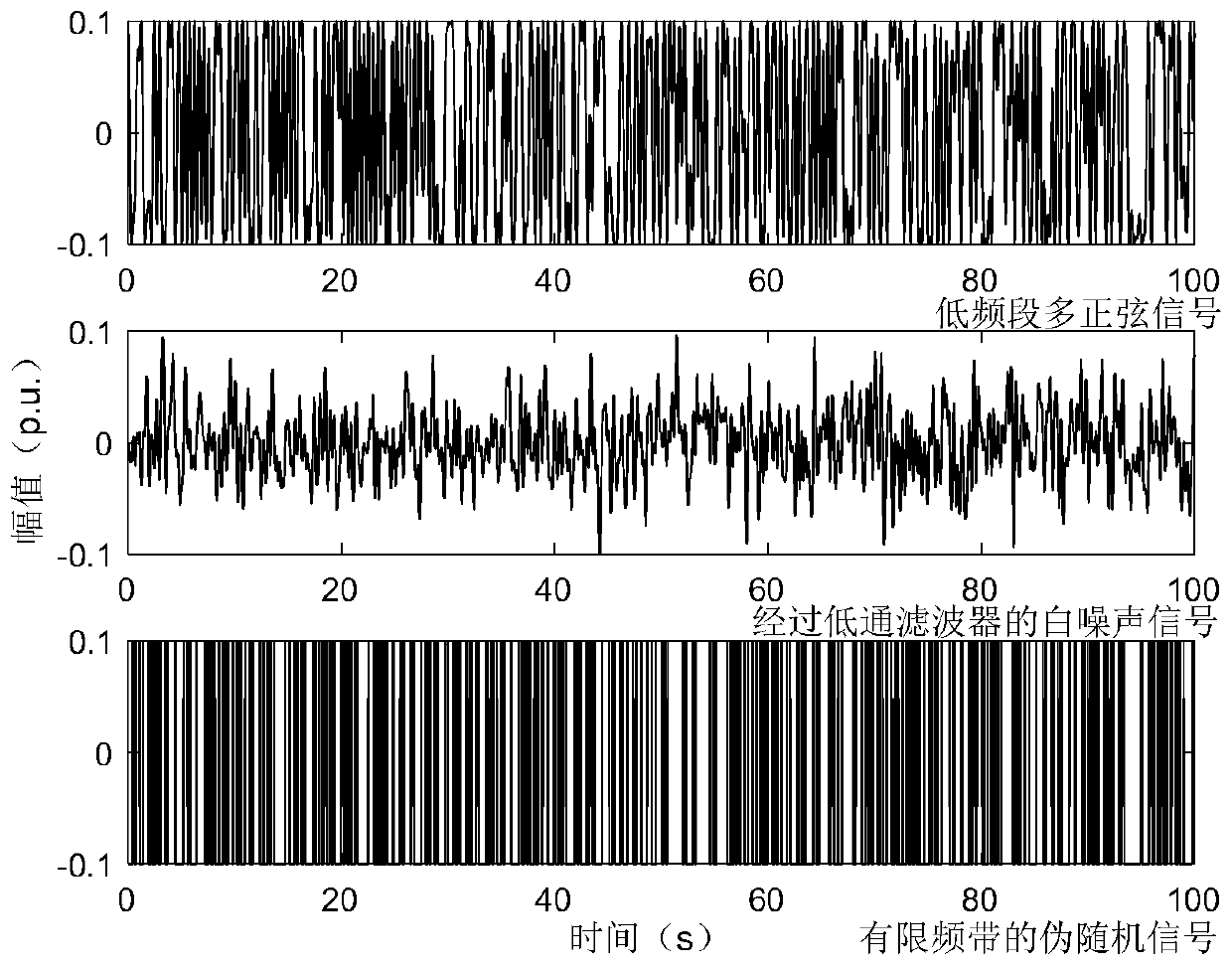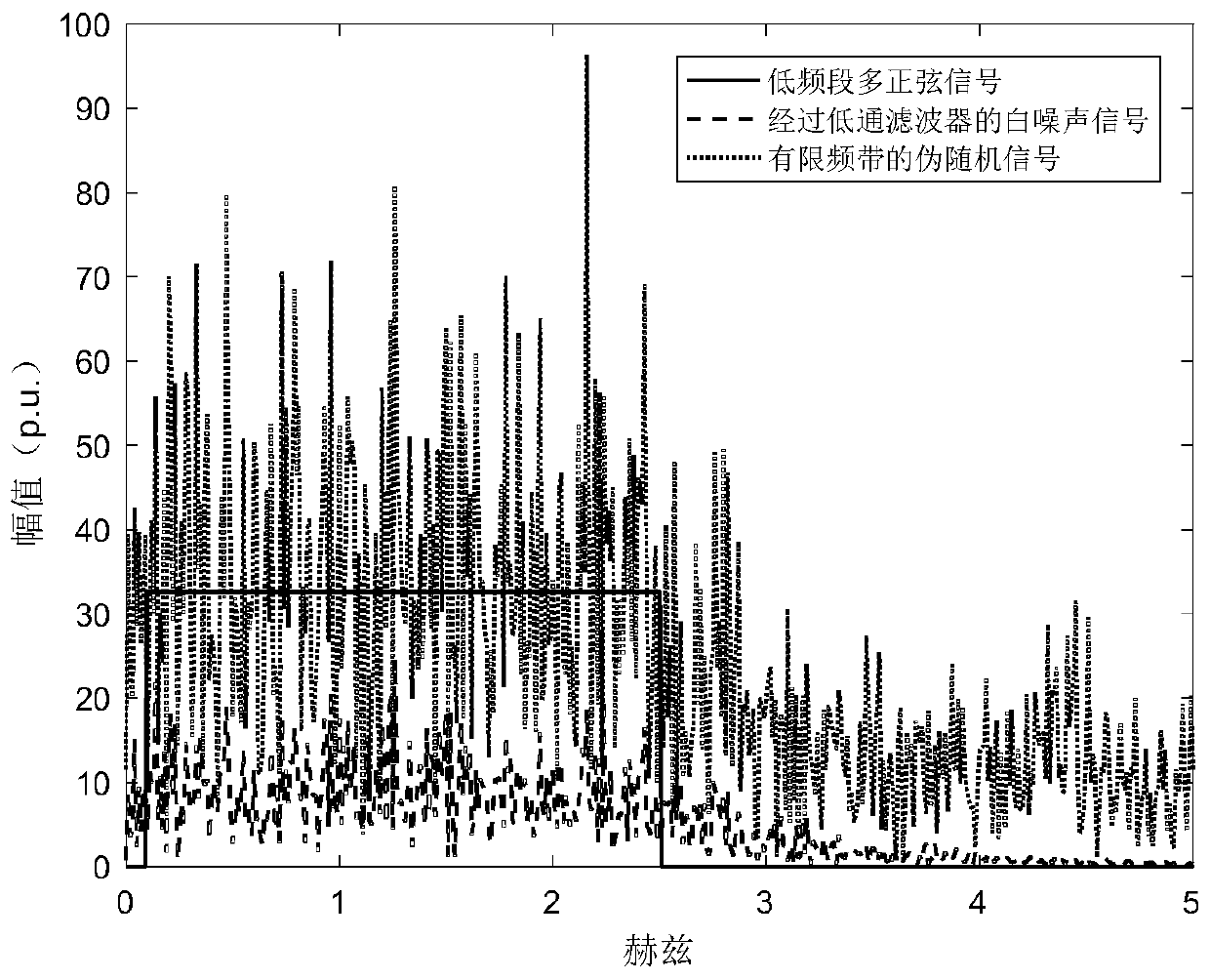A low-frequency band multi-sine signal design method for electric power system state space model identification
A state space model, sinusoidal signal technology, applied in the intersection of power system identification and signal processing, can solve the problems of reduced signal-to-noise ratio of response signal, insufficient concentration of input signal energy, affecting the identification accuracy of power system state space model, etc. little perturbation effect
- Summary
- Abstract
- Description
- Claims
- Application Information
AI Technical Summary
Problems solved by technology
Method used
Image
Examples
Embodiment
[0034] In this embodiment, the time-domain expression of the low-frequency multi-sine signal is: where t is time, a u , ω u and are the amplitude, frequency and phase of the uth sine harmonic component, N uis the number of sine harmonic frequency components.
[0035] Define the crest factor of the multi-sine signal in the low frequency band as: Among them, t is the sampling time, N is the total number of samples of the low-frequency multi-sine signal (that is, the total length of the signal), and max() represents the maximum value of the array in parentheses; obviously, C r The magnitude of reflects the fluctuation of the signal in the time domain: given the frequency domain characteristics of the signal x(t), the smaller the time domain fluctuation of the signal x(t), the C r smaller.
[0036] Low-frequency multi-sine signal design refers to the a u , ω u , N u And the sampling length N, use the algorithm to solve to obtain a set of parameters of the signal wh...
PUM
 Login to View More
Login to View More Abstract
Description
Claims
Application Information
 Login to View More
Login to View More - R&D
- Intellectual Property
- Life Sciences
- Materials
- Tech Scout
- Unparalleled Data Quality
- Higher Quality Content
- 60% Fewer Hallucinations
Browse by: Latest US Patents, China's latest patents, Technical Efficacy Thesaurus, Application Domain, Technology Topic, Popular Technical Reports.
© 2025 PatSnap. All rights reserved.Legal|Privacy policy|Modern Slavery Act Transparency Statement|Sitemap|About US| Contact US: help@patsnap.com



